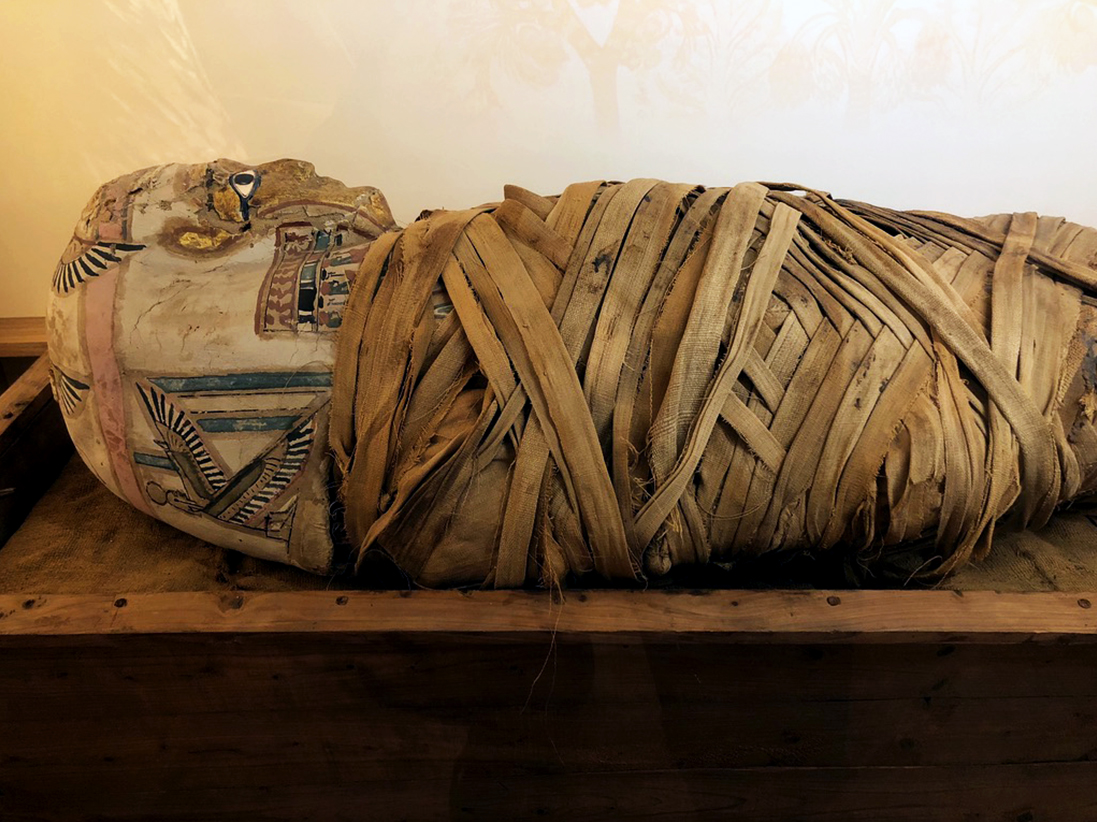
“Hen” the Egyptian Mummy at the Cazenovia Public Library. Photo by Michael Aaron Gallagher.
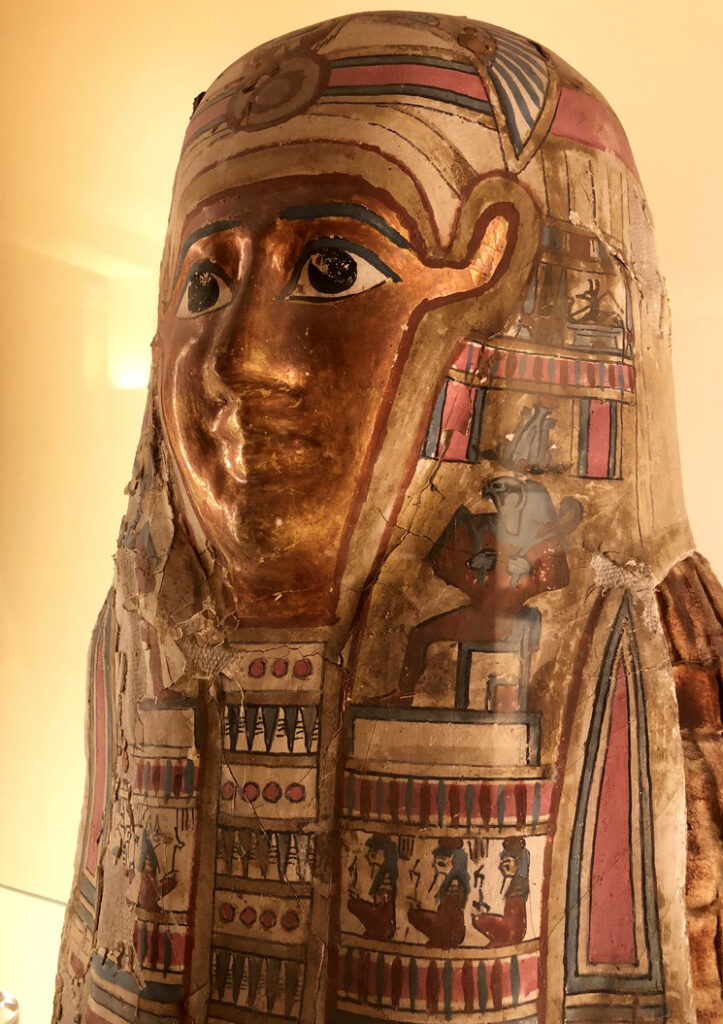
Egyptian mummy mask at Cazenovia Library. Photo by Michael Aaron Gallagher.
Far from the Egyptian pyramids and the hot sands of the Sahara Desert, in the back of a small library in Upstate New York, there lies a 2,000 year-old mummy wrapped in linen, wearing a golden mask. For 130 years, it has been on public display, along with other Egyptian artifacts collected by the wealthy businessman Robert James Hubbard, whose museum collection was donated to the library.
For many visitors, who may never have the opportunity to visit the Egyptian collections at the Metropolitan Museum of Art, the British Museum in London or the National Museum of Egyptian Civilization in Cairo, it provides the rare chance to get an up-close view of ancient artifacts and bring historical anthropology to life.
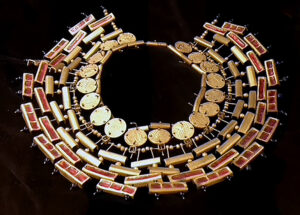
Reproduction of an Egyptian collar at the Cazenovia Public Library from the 1960s. Ancient paintings often show necklaces like these being worn by deities, wealthy nobles and other royalty. Photo by Michael Aaron Gallagher.
In 1894, the mummy known as Hen, a 25 year-old male who likely died of a malignant bone tumor, made the journey from Africa to his new resting place in Hubbard’s library museum in Cazenovia, New York.
During his “Grand Tour” of Cairo, Egypt, Hubbard visited the Sphinx, an Egyptian temple and the pyramids. A couple of days after his visit inside the pyramids, which he said was “dirty” and “slippery” at the time, Hubbard was shopping for mummies.
In his diary, he noted that mummies were being sold in the sales room of the Museum of Boulac for around $20-$30. After purchasing Hen, the man who sold him, unwrapped another mummy, which was less interesting to them because it not only lacked the artifacts that often accompany other mummies, but it was not fully intact. Nevertheless, the skull of the deteriorated mummy was recovered and it returned with Hubbard. He also brought back a painted chest plate that once covered the body (the rest of the corpse had disintegrated after being uncovered and exposed to the air). According to the Collections Coordinator for the library’s museum, “His museum label in 1894 read – ‘Mummy skull, breastplate and sandals, all that remained of a mummy unrolled in my presence, 1894.'”
In addition to the mummies, the collection also includes a replica necklace or collar shown in paintings to be worn by the Egyptian deities, nobles and royalty, as well as many small sculptures. From striding figures, which depict a walking pose, to Ushabti statues that were buried with the dead in the belief that they would carry out tasks in the afterlife, Hubbard’s unique and mysterious collection brought the educational richness of the traditions and peoples of ancient Egypt back with him to the United States.
For more information on Hen the Egyptian Mummy and the CAT scans that he has undergone to discover more about his body you can visit the Cazenovia Public Library (click here).
Below are some of the photographs I took of Hen and some of the other Egyptian artifacts on display. Special thanks to Collections Coordinator Julia Shotzberger for providing more details about each of the pieces. Enjoy!
– Michael Aaron Gallagher
![]()
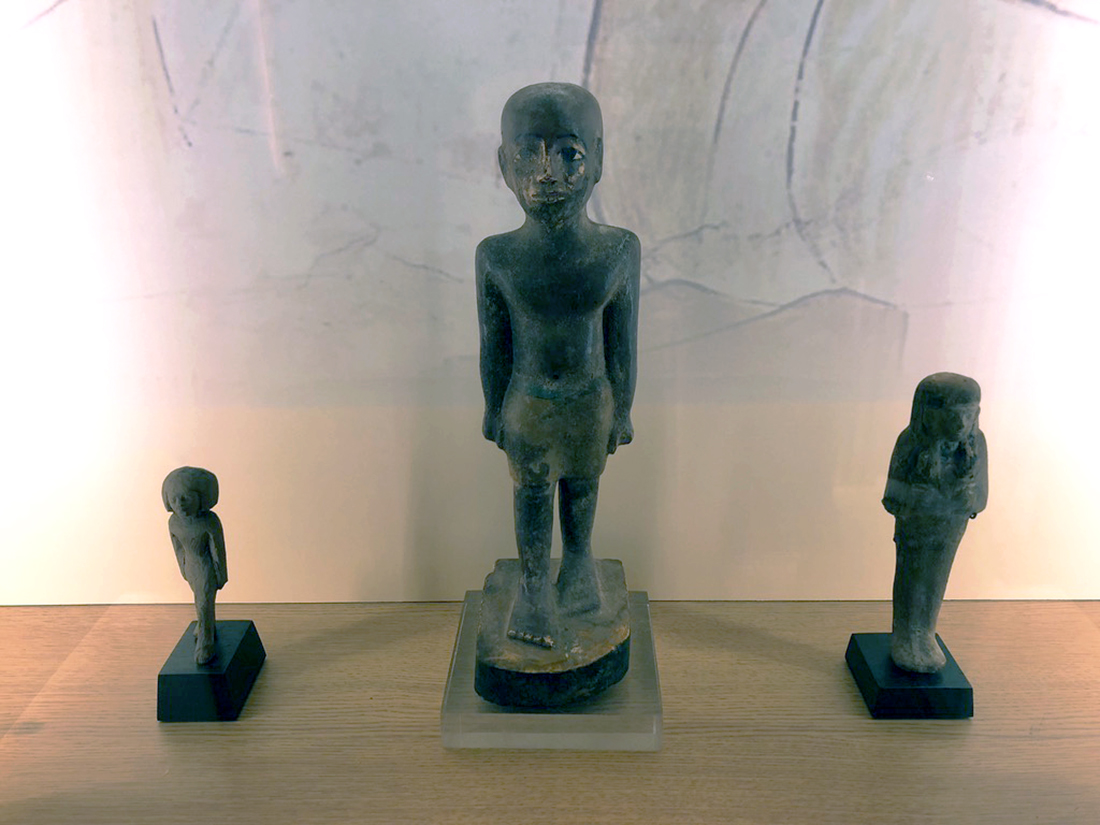
Two striding figures (left and center), which are sculptures that depict a walking pose. On the right, is an Ushabti sculpture, which is buried with the mummy in the belief that it will aid them in completing tasks in the afterlife. According to the Collections Coordinator, “They contained a spell that brought them to life and then they became your servant(s) in the afterlife. If the gods asked you to perform a chore — planting, harvesting crops, making bread or beer, etc., the ushabtis would reply ‘Here I am, I will do it.'” These are just some of the ancient Egyptian artifacts in their collection. Photo by Michael Aaron Gallagher.
![]()
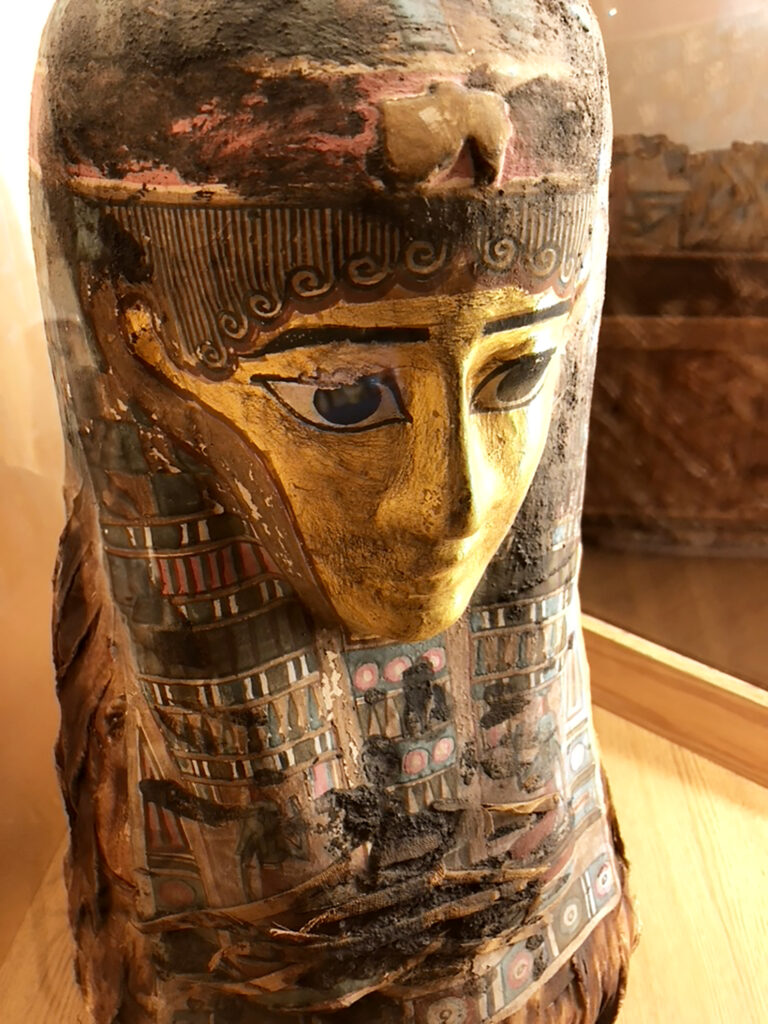
A golden mummy mask, which the museum staff believe once belonged to a female because of the curls on the cartonnage. In the background you can faintly see the mummy “Hen” lying in repose at the Cazenovia Public Library. Photo by Michael Aaron Gallagher.
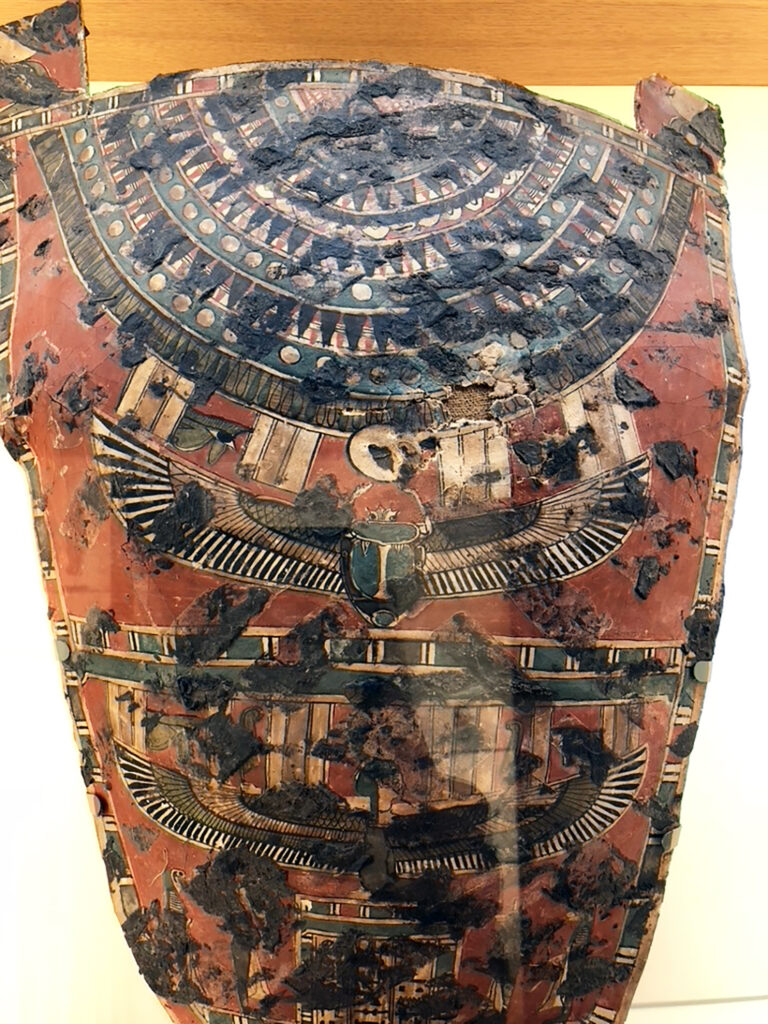
This Egyptian burial artifact is the chest plate that belonged to the second mummy that Hubbard unwrapped. It is on display at the Cazenovia Public Library. Photo by Michael Aaron Gallagher.
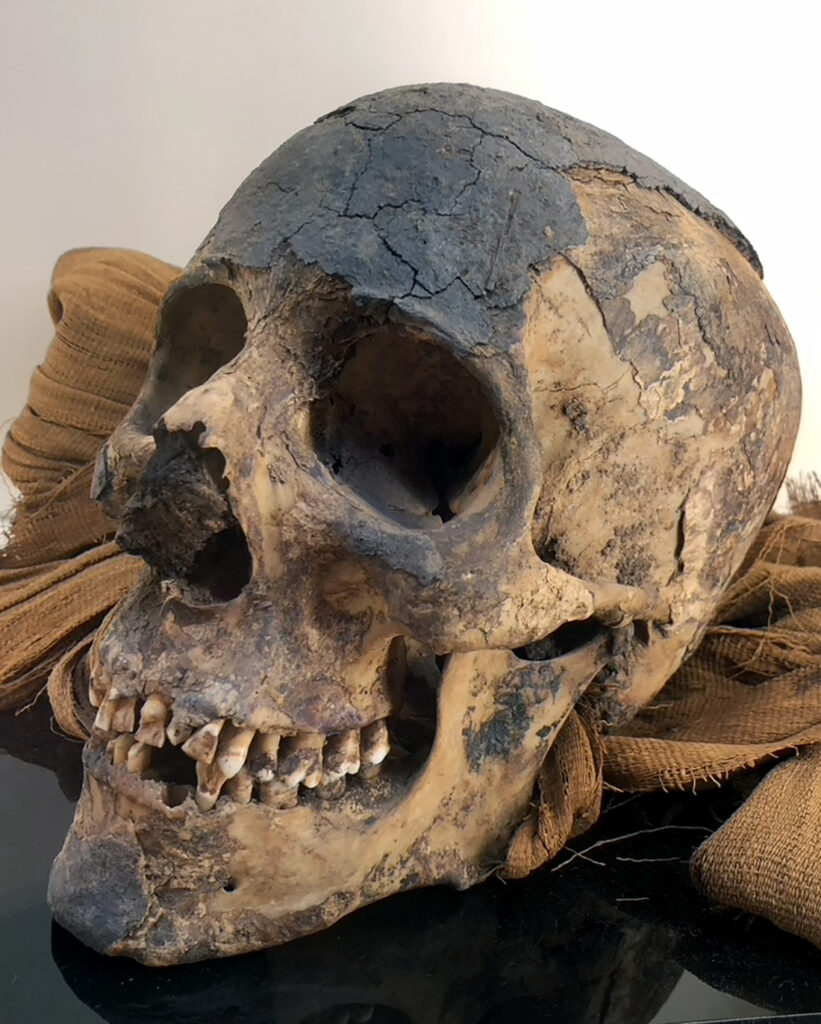
A fascinating educational specimen, showing the condition of an unwrapped Egyptian mummy’s skull at Cazenovia Public Library. Photo by Michael Aaron Gallagher.
![]()
